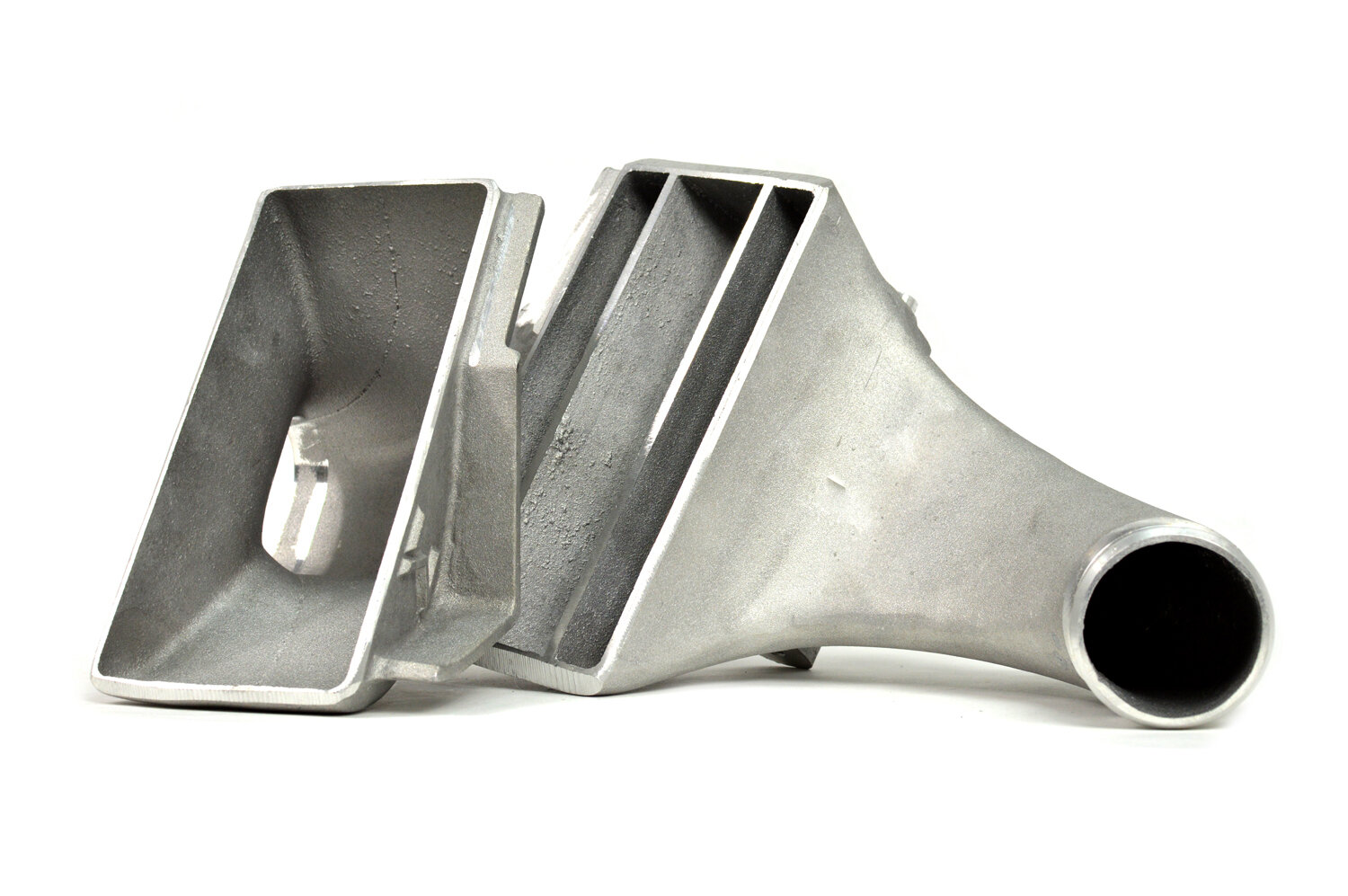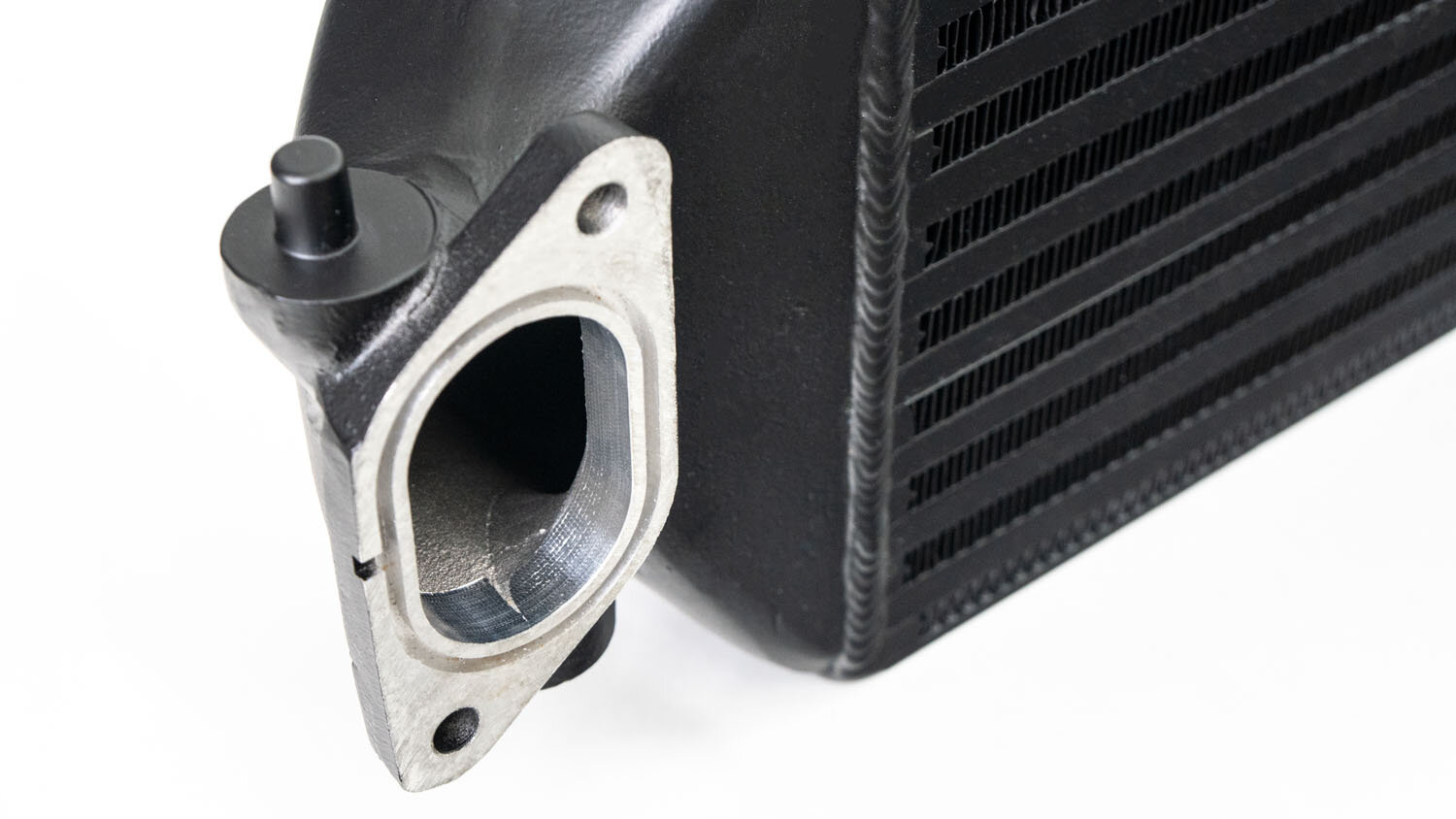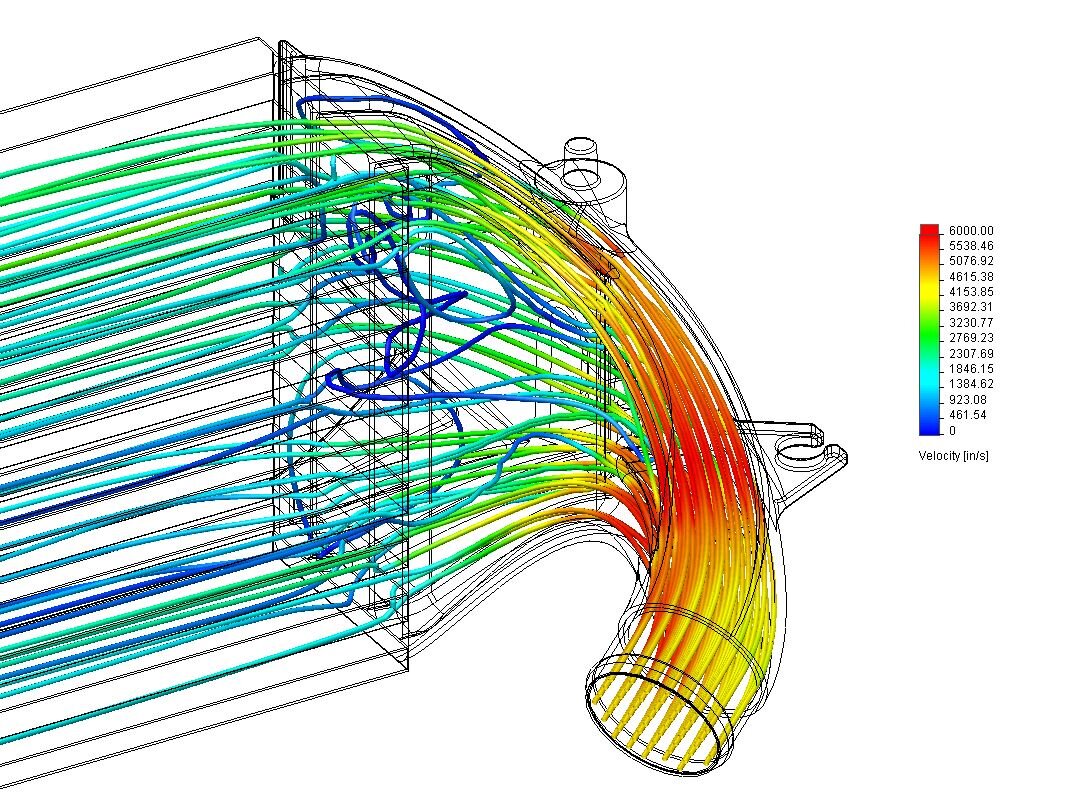Beat the Heat Pt.2 (Cooling Upgrades for the FK8) FMIC
Well team, the 2020 race season did not get started as planned. Actually no real race season has started for much of anyone this year. As of this publication we are still amidst a worldwide lock down due to the recent pandemic. With some sanctioning bodies slowly opening back up in the coming months it’s our hope we can at least make a couple track events before the year is up. No worries, the downtime has allowed us to prepare our Type R for the hot track days so let’s dive into what we did next.
After addressing oil temperature issues in PART 1 we turned our focus to boosted air temperatures. We are ditching the tiny OEM front mount intercooler for our upgraded high-performance Intercooler. OUR FMIC has been on the market for a few months as of this post. we want to dive into why this is the front mount intercooler you want for time attack style events.
There are two main types of heat exchangers (aka core styles) that are used for upgraded intercooler kits. They are:
Bar & Plate
Tube & Fin
Externally they look similar but internally the structure is quite different. A tube and fin design is lighter and less expensive to manufacture. A bar and plate, while heavier, is much better at cooling the air and is also much more durable. An example of the internal structure of each is below.
We opted for a bar and plate COOLER for OUR FK8 for a handful of reasons.
They are much more resilient to damage and debris
We know we are going to be pushing the car on the track. Rocks and rubber will be flying around everywhere so we need our FMIC to take the hits time and time again.
We need better than OEM cooling performance
The bar and plate style will extract away more heat during our on-track adventures. Most of the time attack events boil down to a few key laps. We want to make sure we have the power when it counts.
Bar & Plate
Tube & Fin
PART BREAKDOWN
Manufacture: 27WON Honda Performance
Part #: FK8-6-101-10
Components: FK8 specific designed heat exchanger, crash bar bumper seal strip, mounting hardware, optional wire reinforced boost tubes
Specs:
500+ HP rated bar & plate style core
Integrated inlet air-foil to optimize air distribution throughout the entire body of the core
100% direct bolt-on fitment
Cast-in air guides to ensure all forward air is moving through the core and not around it
Durable black powder coat finish helping protect from road damage
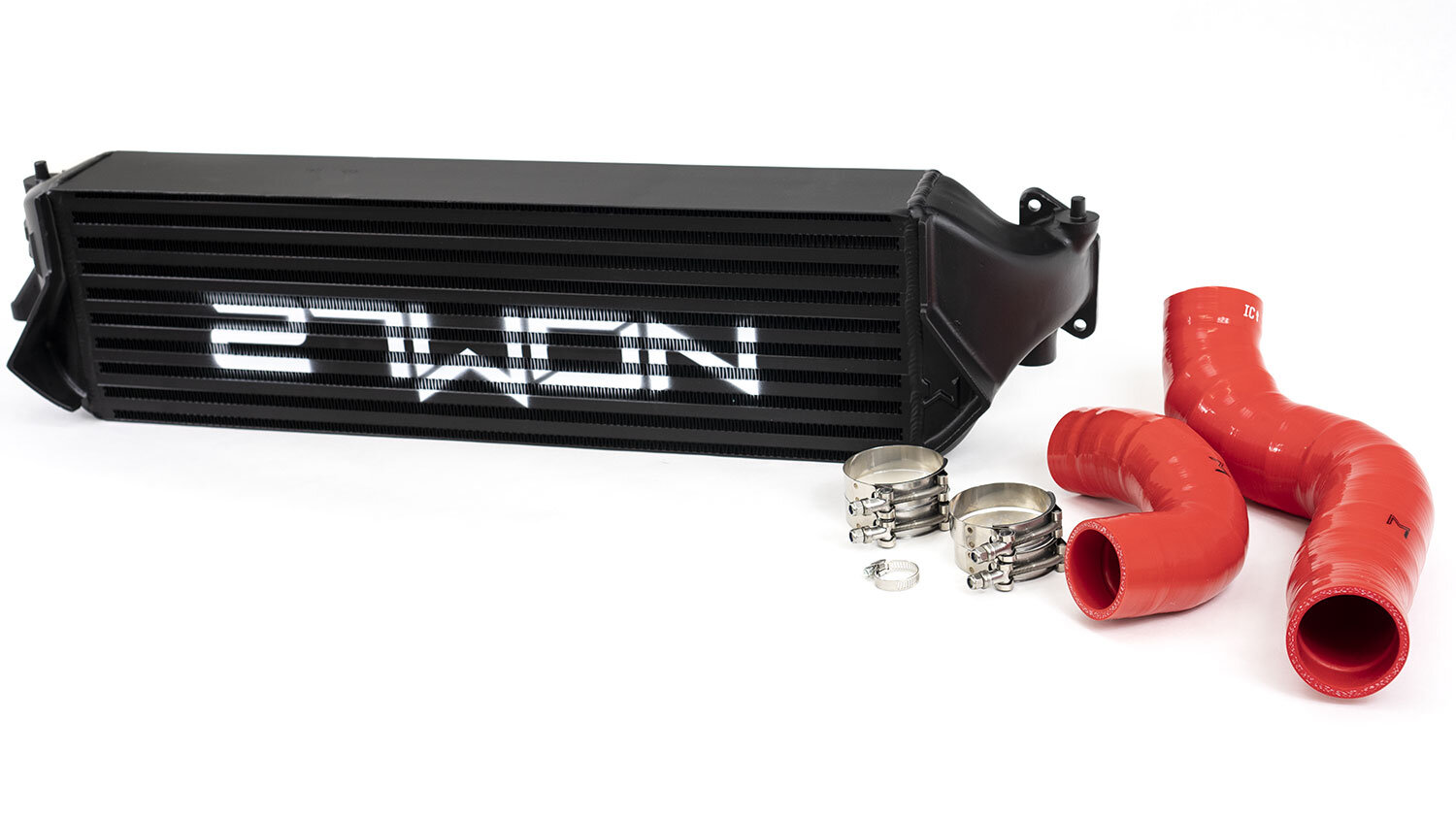
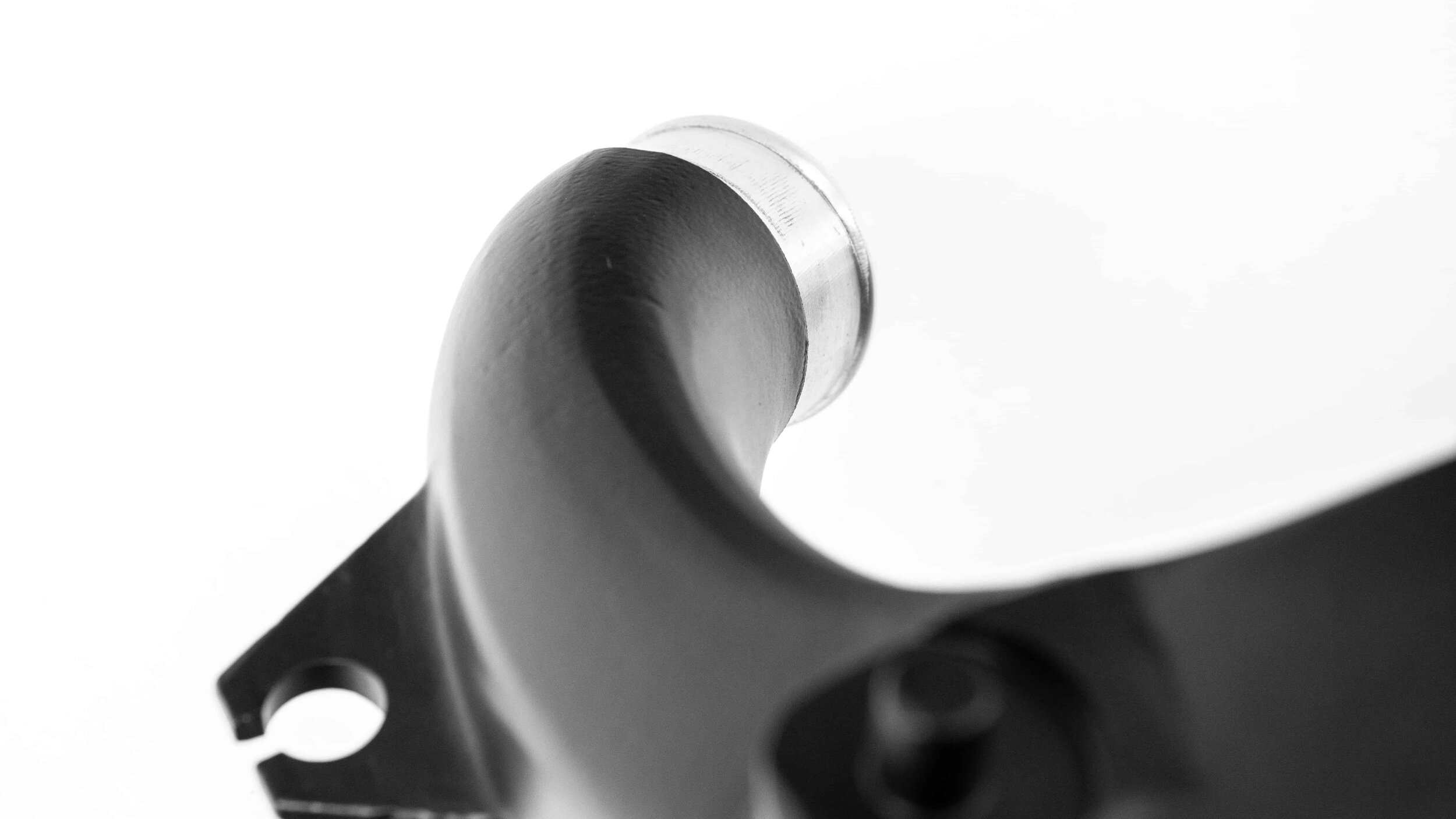
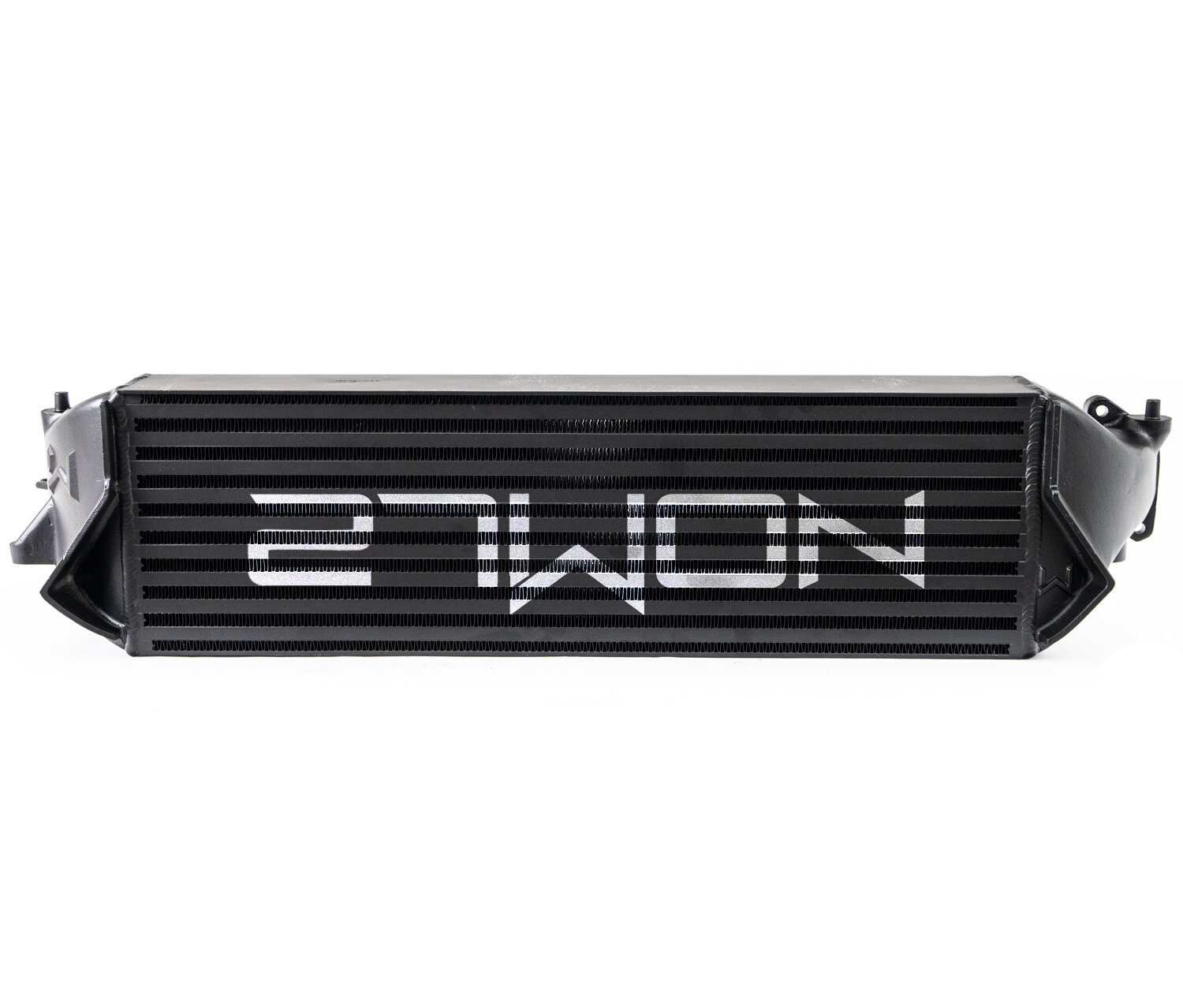
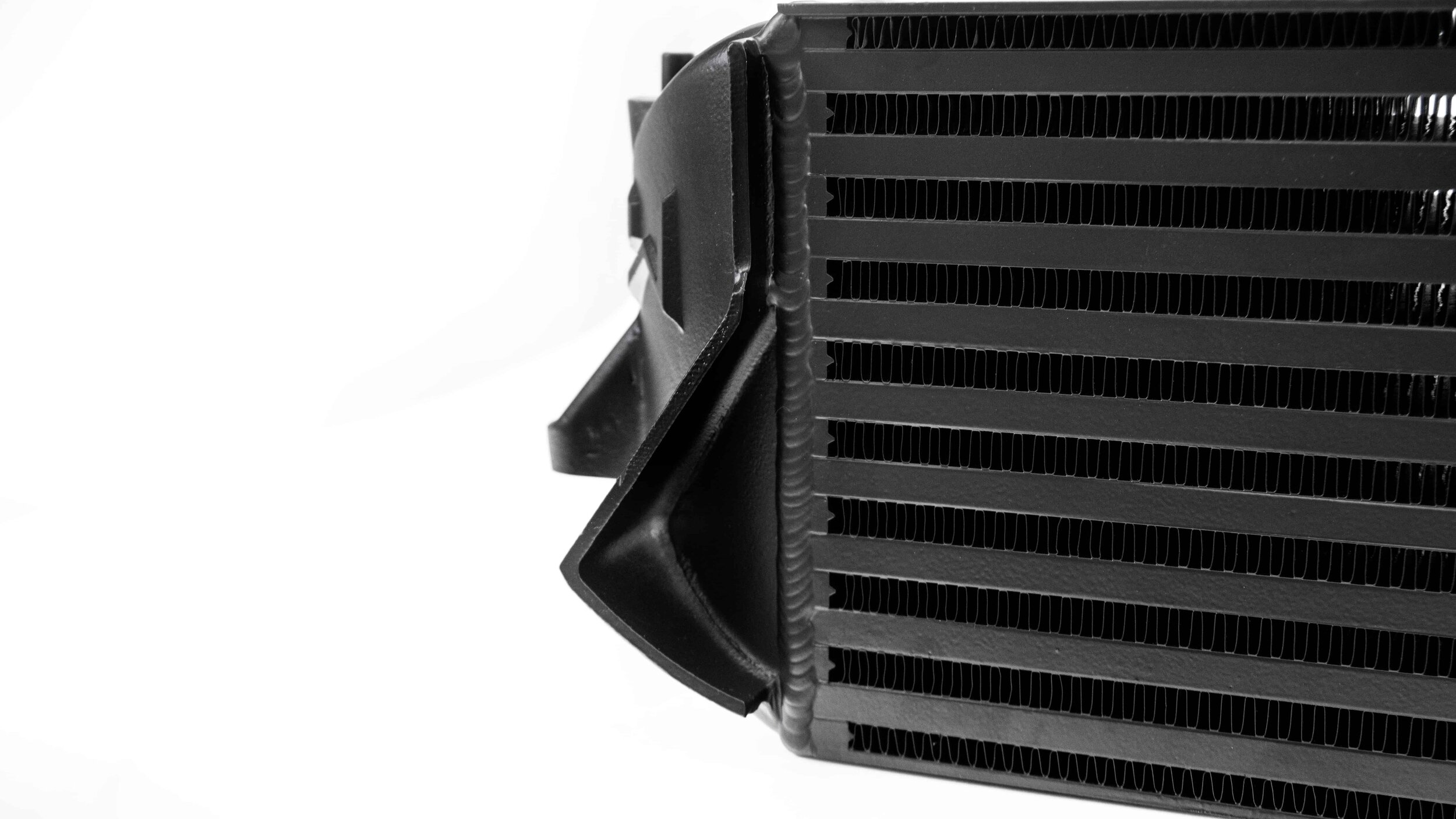
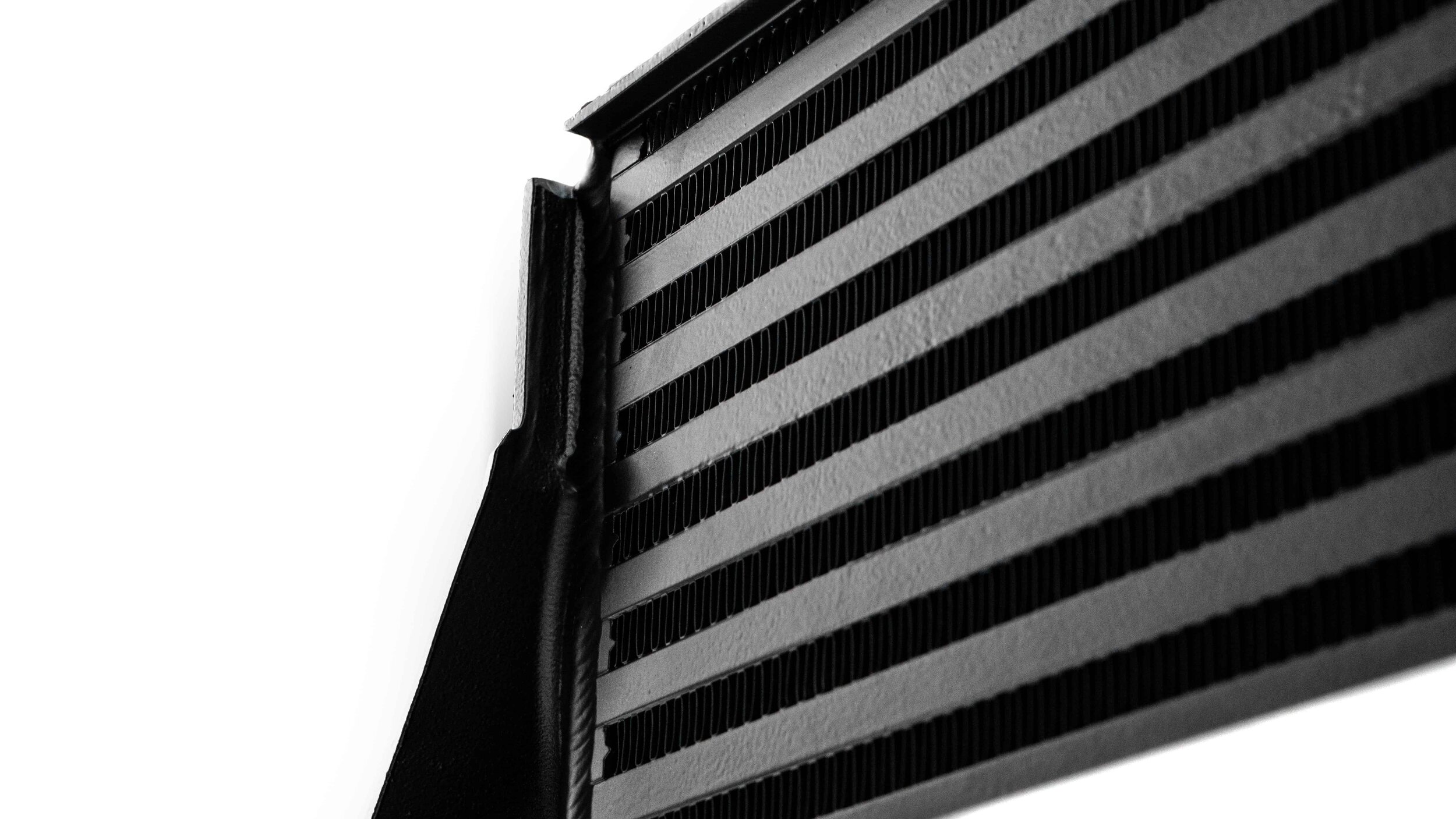
What you should know before upgrading your core..
The intercooler kit is just another piece of the puzzle when addressing the cooling needs of our Civic Type R. What makes the FMIC unique among cooling system upgrades is that it not only works in the cooling department bit it also provides real horsepower and performance gains. This is a part that, once installed, will increased hp and tq figures unlike with anything else that we will be working on. Just like how a small exhaust system creates back-pressure, a small intact tract can also hinder performance. Since we know that as we progress with this build and add other power adders that an upgraded core is a big piece of the puzzle to getting over 400+ hp.
Another thing to consider when upgrading your core is what type of driving and or racing you want to do. This bar and plate style cooler is great for a car like ours that sees mostly street and highway driving with a healthy mix of time attack and HPD style driving events. The short burst of high-intensity laps typical in Time Attack style events is perfect for this intercooler. In longer format racing more where you need to be concerned with long term cooling you might opt for a smaller core.
You can learn more about the 27WON FMIC here.
Be sure and watch out for part 3 of Beat the Heat for our next upgrade
27WON PRO TIP:
When upgrading the intercooler core its also a good time to consider upgrading the OEM boost tubes. The OEM rubber is thin and can become brittle and crack after many heat cycles. Upgraded and wire reinforced tubes like the ours will not only out last the OEM rubber hoses but deliver a small increase in turbo spool as silicone is less prone to expansion than rubber.




